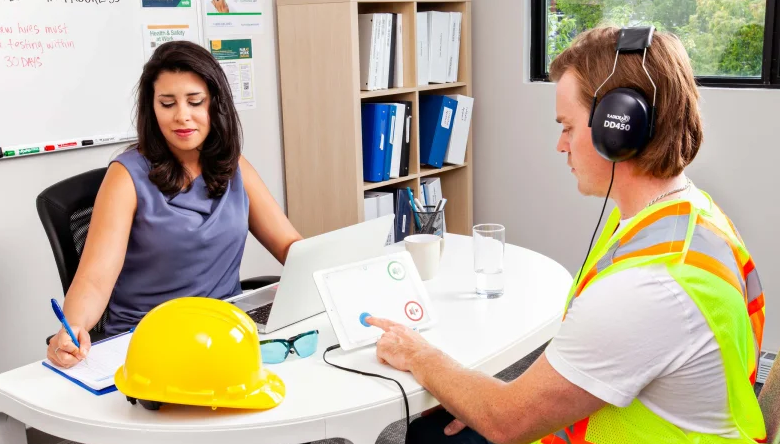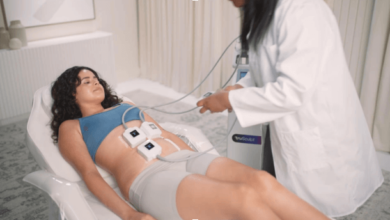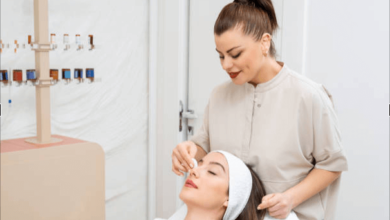Why Australian Workplaces Must Link Audiometry Testing with Vibration Testing for True Exposure Insight

Across Australia’s heavy industries, workplaces routinely conduct distance audiometry testing as part of health surveillance for noise-exposed teams in manufacturing, construction, mining, and logistics. Vibration testing, meanwhile, is steadily gaining momentum as the country wakes to the dangers of hand-arm vibration syndrome (HAVS) and the wider effects of whole-body vibration (WBV) on health.
What’s surprising is that even though both tests are triggered by the same equipment—power tools, trucks, or plant that buzzes and shakes—they are often treated as siloed projects. One crew orders the audiometry, another tracks vibration tests, and records pile into different management systems. The practical results rarely meet on an analyst’s desk, which means the do-it-today reports hardly warn about workers who use noisy, vibrating tools for 80% of their shifts.
This duplication still stings on the job. Audiometry results alone miss the workers who pass basic hearing tests, yet still incur internal health damage. Only vibration scores linked to the same shift records expose the full toll. By aligning both tests with one interpreter—one monitoring database and one intervention plan—enterprises in construction, mining, and manufacturing reveal the actual daily dose of noise and shake. Australia’s regulators already encourage firms to broaden the compliance frame, and smart organizations realise connecting audiometry with vibration ratings is no longer an optional spreadsheet tab—it’s the baseline.
Two Hazards, One Workforce
Many high-hazard jobs keep the same crew in the danger zones of both noise and vibration. Picture this:
– Road teams smashing asphalt with jackhammers alongside ballistic plate compactors.
– Steel shops running hand-held grinders and impact drills full throttle.
– Dozers and excavators rolling over rip-rap on logging roads.
– Rail and utility teams reaming trench walls and piping while replacing signals and power lines.
All in the same shift. Typical risk plans keep noise and vibration reports on different spreadsheets, and health exams group hearing loss and recurring back pain in different folders.
This outdated checklist breaks the reality workers feel in their bones and eardrums every minute of the day.
Audiometry Testing Can Do More Than Measure Hearing
Under Australia’s Work Health and Safety Regulation 58, hearing conservation programs kick in the moment a site averages a noise dose of 85 dB(A) over that 8-hour shift period. Shoppers think of this as a box. They book a test every second year, file the report, and keep running the site the same way, with the resulting graphs counted as reactive, not as data that drives change.
Yet the same test, if targeted right, can signal when the combined job demands of noise and vibration are beginning to push the risk threshold in the body.
But real-world audiometry does more than track noise damage; it hints at other nagging physical stresses when read alongside on-the-ground conditions. Consider these scenarios:
An operator shows an unexpected drop in hearing sensitivity. Noise dose is unchanged. Could daily vibration fatigue be nudging them toward careless adjustments of their hearing protectors?
If an entire crew of drillers sees the same audiometric dip, the reason may stretch beyond loud noise. Repeated awkward stances, worn tool casings, and subtle power-load swings may be chalking up harm faster than the loudness meter tells us.
When hearing patterns and vibration monitoring data move in sync, we see fractures that one test alone conceals.
See also: The Power of Canna Rhizotonic: A Must-Have for Healthy Plant Growth
Vibration Monitoring: Useful Data, Still the Back-Up
Machine vibration—especially when we speak of hands, arms, and entire vehicles—barely reaches the desk in most AU workplaces. When it does, we find it’s still a post-hazard move, slipped in after an operator complains or written up when new tools roll in. Collect the data, sure, but leave it orphaned without an operator-specific monitoring stream of follow-up health profiling.
Audiometry, the expected LOA delve, can bridge that. Picture adding a few vibration cue questions—“Does the grip tire when the whistle blows? Is the pinkie numb? Is the palm still weirdly warm?”—to the scheduled hearing test. Armed with a concise ‘flag or follow-up’ map, one testing agenda can steer at-risk hands into the vibration lab, preserving hours and making the industrial ‘simple check – track – treat’ mantra breathable.
Connected Surveillance for Real-Time Risk Management
What it achieves: This approach finds workers who may be developing issues long before a formal medical diagnosis is made, and it automatically relates the type of exposure involved — letting safety teams revise tools, tasks, and procedures all at once instead of patching one item at a time.
Using Existing Tools: Most Australian organisations already own the audiometry and vibration risk tools, yet they still make decisions with fragmented data. Streamlining workflows is the next step.
Steps for Integration:
– Combine audiometric data with HAVS (Hand Arm Vibration Syndrome) screening results into one user-friendly worker health dashboard.
– Cross-reference exposure logs by the task or the tool rather than looking at workers one at a time.
– Choose software that is designed for tracking multiple hazards over the same worker, across roles, and over all shifts.
– Train nurses and health safety teams to study trends that span all types of exposure, rather than viewing noise and vibration as separate issues.
– Loop procurement and maintenance teams into investigation workflows as soon as results hint at tool or procedure-related risk.
– Results: This connected, holistic flow transforms routine health checks into a live risk feedback loop that automatically updates the safety, operations, HR, and procurement teams.
Regulatory and ESG Expectations Are Getting Tighter
Down under, our work health and safety (WHS) authorities want firms to shift focus from reacting to incidents to proactively managing health risks. The glare is widening to include psychosocial issues and ongoing physical exposures. Soon, firms must prove they can actually track, monitor, and act on risks that overlap and compound over time.
Health and safety numbers are now a big piece of the social scorecard that ESG (environment, social, governance) investors scrutinise. Companies showing they monitor physical exposures—like hearing loss and vibration hazard—tightly integrated with HR, safety, and training records will pull ahead in tenders, audits, and keeping talent on board.
Wrap It Up is the Plan With the Stars
Tests for hearing and vibration are no longer boxes to tick; they’re the triggers for deeper inspection. The catch is that they only work in tandem.
Firms that still look at audiometry and vibration separately will overlook gradual, hard-to-notice trends. Critical early signals fade, risk exposures linger longer, and potential compliance breaches become an avoidable liability later on.
Start smoothing that divide now. That doesn’t mean running more tests. It means weaving the different tests, their results, and their storytelling metrics into a single dashboard. The firms still working in separate islands of data carry risk you can’t see. The firms that connect the data, the contexts, and the trends will not only protect their people on the coast but also safe-judge and affordable business for the future. The real progress in workplace health is not in merely hearing the report but in understanding the complete narrative written by the bodies of the workforce you entrust.





